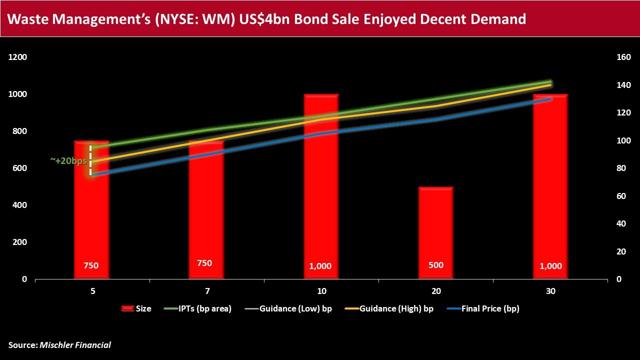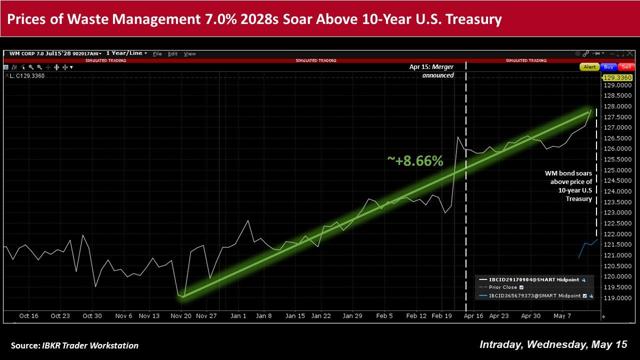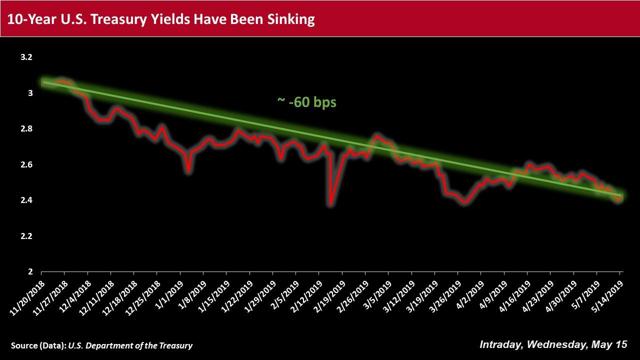The Yucca Mountain site was chosen in 1987 to be the first of two high level and spent nuclear fuel repositories in America, but the basis for the final decision was quite political, causing large uncertainties in the performance and the cost.
DOE
One of science's strongest abilities is to be able to reduce uncertainties in a problem.
If left to itself, science usually does this very well. But it's rarely left to itself. Science exists within the larger framework of society and has to deal with the realities of politics, economics, history and even religion.
Nowhere is this more obvious then with nuclear waste disposal. For this problem, the question we want to know with a fair degree of certainty is:
If we put nuclear waste in this spot, what's likely to happen to it in 10,000 or 100,000 years? Will it contaminate the environment before it decays away? What are the risks to humans and the ecosphere?
Unfortunately, even though we in the scientific community have answered these questions pretty well, our nuclear waste program is presently in shambles.
To recap nuclear waste history, America's nuclear waste program began during WWII and the making of the Bomb. The production and reprocessing of fuel from weapons reactors to make Pu resulted in the first significant amount of nuclear waste beginning in 1944.
With the increasing frenzy of weapons production, and the advent of commercial power reactors in the 1950s, from which you can't make weapons, it became obvious that we needed a place to put this stuff away.
The federal government asked the National Academy of Sciences (NAS) to come up with the best strategy and, in 1957, they reported that deep geologic disposal (half-a-mile or so below the Earth's surface) was best. And they had a particular rock in mind, called massive Permian salt, which is the best rock for isolating anything - forever. And a rock that America has a lot of.
This recommendation led directly to the only operating deep geologic repository in the world, the Waste Isolation Pilot Plant (WIPP) in New Mexico. A splinter strategy in the 1970s, involving retrievability of spent nuclear fuel from the depths, then led to the 1982 Nuclear Waste Policy Act (NWPA) and its 1987 Amendment that chose Yucca Mountain, mainly by political means, as the only repository for spent nuclear fuel (SNF) and high-level waste (HLW). The State of Nevada has fought that decision ever since.
We submitted a license application for Yucca Mt in 2008, but in 2009, the Obama Administration terminated the project and formed the Blue Ribbon Commission (BRC) to recommend alternative paths.
(Full disclosure, I was one of the original authors of the Yucca Mt License Application – very proud of the work we did over two decades)
Meanwhile, WIPP continued on in the salt, with its license and permit curtailed to include only transuranic waste (TRU), the other type of nuclear bomb waste, that is mainly Pu, U, Am and other actinide elements along with other nasties.
Periodically, attempts are made to resuscitate the Yucca Mt. project, as is being done once again as of this writing.
A Rock With Only Little Uncertainty
The ultimate basis for any choice of rock and location is to maximize properties you think are good, and minimize properties you think are bad. The best way to do this is to use natural systems that have already minimized these uncertainties by minimizing or eliminating the properties themselves. Pick a site where almost nothing has been happening for a long time, and where almost nothing will happen in the future.
This is WIPP - few uncertainties.
The Salado Salt formation that hosts the WIPP site was chosen originally based entirely on science by the NAS. It was designed and built for all nuclear waste from any source, but later was licensed and permitted only for transuranic waste as the decision on Yucca Mt reduced its mission – for now. Its choice caused few uncertainties.
DOE
Alternatively, you can try to impose certainty on the system through engineering. Unfortunately, the Earth is a large, active and open system that resists control by human engineering schemes and our understanding and control of these processes has always been limited.
Yes, the Pyramids are fantastic but that's about all humans have made that has lasted anywhere near what we think of as geologic time, and what we need for long-term safe disposal of nuclear waste.
This is Yucca Mountain - many uncertainties.
There are many factors and properties of a situation that contribute to risk. For geologic containment, the most important properties are the characteristics of the rock itself, especially the permeability, chemical composition, strength, thermal conductivity, density, porosity, and porewater chemistry. Another key element includes the climate of a particular place and time.
Therefore, the best way to reduce uncertainty is to pick a situation that has few variables or where those variables have values approaching zero, which is what the NAS did when they chose Permian Salt. The Atomic Energy Commission, and later the Department of Energy, searched for a suitable site in Permian Salt and, after several failed attempts, was invited by the local community in Carlsbad, New Mexico to investigate their proposed site.
Carlsbad was settled in the 1880s by German miners mining salt above what is the most optimal rock in the United States - the massive Permian Salado Salt formation. The miners and geologists in Carlsbad understood the engineering needs of the nuclear repository better than the DOE, and understood that the Salado Salt Formation outside of Carlsbad would provide all of the performance required even without any engineered barriers.
The Waste Isolation Pilot Project (WIPP) repository was sited in the Delaware sub-basin of the Permian salt in southeast New Mexico and West Texas. It was designed and built for all nuclear waste of any type. Later, after the 1982 NWPA, WIPP was licensed and permitted only for transuranic nuclear weapons waste.
WIPP is just one place that has ideal massive salt deposits. Although the following discussion uses data from the Salado Salt at the WIPP site, we have well over 100,000 square miles of appropriate massive salt deposits in America with similar optimal rock properties that would suffice for nuclear waste disposal.
One particularly important property of massive salt is something called creep closure. At depth, under the pressure of the overlying rocks, the salt cannot maintain an opening, fracture or pore space. It's why the salt is essentially impermeable, e.g., the trapped water in the salt hasn't migrated an inch in 270 million years.
The permeability of water, or the hydraulic conductivity, is less than 10-14 cm/s, and the aqueous diffusion coefficient is less than 10-15 cm/s2, amazingly low values that are, for all practical purposes, zero. Water just won't move in this rock.
The redox potential of the pore water in this salt is exceptionally reducing, one of the most reducing in the country, with Eh values (oxidation potential) less than -500 mV. This makes redox-sensitive radionuclides such as Pu, U, Tc, Np, Se, and I, immobile and unlikely to migrate out of the repository in the highly unlikely event that there is a path out.
Which is unlikely in the extreme. If a fracture does occur in the salt, or if we dig out an opening to put waste in, the salt creeps closed over a relatively short time, tens of years. It naturally recompacts so there is no open space and the salt becomes essentially impermeable again.
In fact, any disturbance in rock properties from a cut only goes out about 14 feet from the wall of the repository anyway. Beyond that, the rock isn't even disturbed. And these formations are thousands of feet thick. At WIPP, the Salado salt formation is 2000 feet thick over an area of 10,000 square miles.
Two of those square miles could hold all of the waste destined for Yucca Mountain. WIPP already has more nuclear waste by volume than everything that was supposed to go into Yucca Mountain, some of it as radioactive as high-level waste.
In addition, the Salado Salt Formation in this region has never been subjected to any adverse geological processes – no volcanism, no folding or faulting, not even any tilting after 270 million years, quite unusual. There was only some regional uplift. In fact, this area is tectonically the quietest region in America and will be for the next 200 million years.
Which is why the National Academy of Sciences picked this rock in the first place. All the adverse properties and possible processes are either practically zero or non-existent. Which means the uncertainties are few and small, and come mainly from the mining operation or future human activities that we can never predict or control. The NAS recommendation for a salt host rock still stands and, in fact, has been borne out by 19 years of successful WIPP operations.
A Rock With Lots of Uncertainty
The other way to address uncertainty is to deal with each uncertain variable separately and try to force them to become practically zero through human engineering. The Yucca Mountain Project tried this, beginning in 1982, by hoping variables that cropped up were sufficiently minor that they could be handled by changing the design as we discovered them.
Instead, what we did was just add more variables with bigger uncertainties. We addressed many by testing and redesigning over the years between 1987 and 2000, or finding new information, but the uncertainties just grew. As did the projected cost.
The host rock for the Yucca Mountain repository, the Topapah Spring tuff, is a highly fractured, dual porosity, and variably saturated volcanic rock with highly oxidizing pore water, that sits along the edge of a tectonically-active region called the Las Vegas Shear Zone in which the Mojave Block is being rotated between the San Andreas fault along the south and the Garlock Fault along the north.
The permeability of water, or hydraulic conductivity, varies from 10-10 cm/s to 10-4 cm/s in the tuff matrix, from 10-4 cm/s to 10-2 cm/s in small fractures, and greater than 10-1 cm/s in large fractures and faults. The ionic diffusion coefficient varies from about 10-10 cm/s2 to 10-6 cm/s2 depending upon the volumetric water content which varies from a few percent to 10% depending upon the position and degree of saturation. In some of the proposed engineered barriers, the volumetric water content would exceed 30%.
The redox potential of the pore water at Yucca Mountain is oxidizing has Eh values greater than +200 mV, causing redox-sensitive radionuclides to be under constant threat of becoming mobile.
Yucca Mountain now has several engineered barriers that are supposed to reduce the effects of particular properties, like the tuff's relatively large flux of oxidizing water, in the hope of reducing their uncertainties. These include reducing inverts, shotcrete, robust waste containers with copper and ceramic coatings, titanium drip shields, vitrification of HLW waste, waste package supports and reducing gravel backfill.
Unfortunately, these have only added uncertainty to the repository, since their rates of degradation and time period for optimal performance are themselves uncertain.
The Cost of Uncertainty
The Nuclear Waste Policy Act and its Amendments established a 0.1 cent per kilowatt-hour users fee on nuclear generated electricity to pay for the repository and associated costs, called the Nuclear Waste Fund (NWFund). Although industry payments were stopped in 2014 until we get our nuclear waste program act together, the NWFund will receive about $100 billion by the end of this century, assuming it gets going again when we decide our future.
However, recent reports from the Government Accounting Office (GAO) have shown how the projected costs for Yucca Mt, including waste preparation unique to YMP, have risen from $80 billion to over $400 billion. The NWFund will certainly not cover these expenses, and taxpayers or ratepayers would have to step in.
On the other hand, the cost of a repository in a host rock like the Permian salt will only be about $30 billion, easily handled by the NWFund. That's because the cost is actually a function of the choice of rock, and the science that should be determining which site is best.
No one envisioned that a political choice, like the one that selected Yucca Mountain, would have such a profound cost effect because in 1982 no one understood the many aspects and costs of a deep geologic repository.
The 30-year study of Yucca Mt by all of us scientists and engineers led to an amazing understanding of how water and contaminants move through the Earth's subsurface and how we can affect that to our benefit. The $12 billion spent on that study from the NWFund was not wasted at all.
All of that information is useable elsewhere no matter what rock we pick. Our understanding of corrosion, transportation, permeability, engineered barriers, shielding, packaging, waste form development, material science, among others, have been increased enormously by studying Yucca Mt.
In fact, that understanding is what makes choosing Yucca Mt an obvious mistake.
Using science as the basis of the decision doesn't just give you reduced uncertainty, it also means getting the lowest cost. That's how science is supposed to help society.


